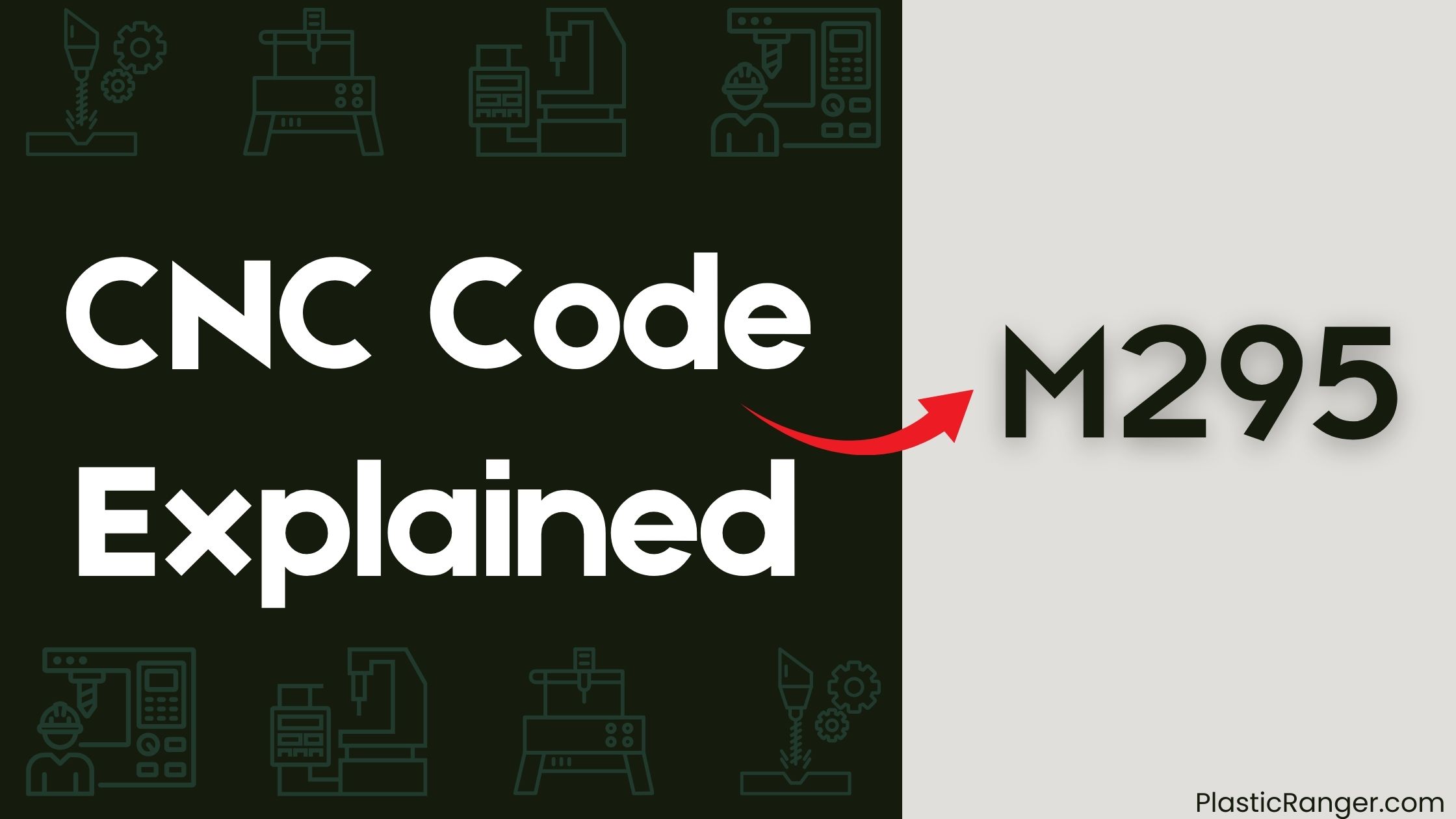Welcome to our simple guide on the M295 CNC code. Whether you are new to CNC programming or an experienced machinist, understanding the M295 code is essential.
This guide will explain everything you need to know about this unit mode command—what it is, when to use it, and why it matters.
(Step-by-step.)

Key Takeaways
- Advanced Multi-Stage Cutting: M295 activates Fixed Compound Cycle – Cutting Pattern 2, automating complex toolpaths for repetitive operations like pocketing, contouring, and threading, enhancing efficiency and consistency.
- Versatile Code Integration: It works seamlessly with related M-codes (M294, M296) and G-codes (G71, G72, G73), supporting advanced threading, high-speed drilling, and custom macro functions for specialized machining tasks.
- High-Precision Applications: M295 is ideal for industries demanding intricate geometries, such as aerospace, automotive, medical device manufacturing, and mold and die production, offering superior accuracy and thermal deformation compensation with M297.
- Optimized Performance Controls: Features like G187 for tolerance control and M238/M239 for dynamic feed rate adjustments help achieve tight dimensional accuracy, superior surface finishes, and extended tool life through real-time monitoring.
- Efficiency with Considerations: While M295 boosts productivity and reduces costs, it requires skilled programming for complex setups and relies on proper integration with external codes, with performance variations based on machine-specific configurations.
Key Characteristics
1. Function
- Multi-Stage Cutting Cycle: M295 engages a multi-stage cutting process optimized for repetitive operations such as pocketing, contouring, and threading. This minimizes programming efforts while ensuring consistent results.
- Pattern 2 Toolpath Geometry: This pattern defines specific toolpath geometries, which vary depending on machine configuration and the intended application. It is particularly effective for machining intricate contours with high precision.
- Automation Efficiency: M295 reduces operator intervention by automating complex toolpaths, leading to consistent production quality and reduced cycle times.
2. Associated Codes
- Related M-Codes: M295 belongs to a series of M-codes:
- M294 – Activates Pattern 1
- M295 – Activates Pattern 2
- M296 – Activates Pattern 3
- G-Code Integration: M295 often works in conjunction with G-codes to enhance machining capabilities:
- G71/G72 – Longitudinal and transverse compound cycles, typically used for thread cutting
- G73 – High-speed drilling cycles for efficient material removal
- G74/G76 – Advanced threading cycles for precise thread profiles
- Custom Macro Compatibility: M295 can be integrated into custom macros for specialized machining applications, offering flexibility for unique production requirements.
3. Applications
- High-Precision Industries: M295 is extensively used in aerospace and automotive manufacturing where intricate geometries and high precision are critical.
- Thermal Deformation Compensation: In temperature-sensitive workflows, M295 pairs with M297 to compensate for thermal deformation, ensuring dimensional accuracy despite environmental changes.
- Medical Device Manufacturing: M295’s ability to handle micro-level precision makes it ideal for producing medical implants and surgical tools.
- Mold and Die Industry: Its complex contouring capabilities are leveraged in mold and die creation, where intricate cavity designs are required.
4. Technical Context
- Tolerance Control: M295 requires the activation of G187, which manages tolerance control for maintaining tight dimensional accuracy.
- Dynamic Feed Rate Adjustments: Override settings like M238 and M239 allow real-time feed rate adjustments, enhancing flexibility and process optimization during machining.
- Surface Finish Optimization: By fine-tuning toolpath parameters and integrating with G187, M295 helps achieve superior surface finishes, reducing the need for secondary finishing operations.
- Tool Life Management: M295 can be combined with tool monitoring systems to optimize tool life, reducing downtime and maintenance costs.
Dataset Organization Framework
| Category | Parameters | Source References |
|---|---|---|
| Code Definition | M295, Pattern 2, Fixed Cycle | [1][2][4][6][21] |
| Toolpath Logic | Multi-axis synchronization, Looping | [3][18][28] |
| Material Compatibility | Metals, composites | [13][16] |
| Surface Finish Optimization | Fine contouring, micro-milling | [6][13][21] |
| Tool Life Management | Adaptive feed control, real-time monitoring | [2][4][18] |
Logical Inference
Pattern 2 in M295 likely prioritizes axial tool loading, which reduces vibration during deep-pocket milling. This contrasts with Pattern 1, which emphasizes radial tool loading. While this inference aligns with observed machining patterns, confirmation requires machine-specific documentation to account for variations across different Okuma models.
Additionally, the integration of M295 with modern CNC monitoring systems suggests potential for predictive maintenance and process optimization, further enhancing its value in smart manufacturing environments.
Advantages of Using M295
- Enhanced Productivity: Reduces cycle times through automated, optimized cutting patterns.
- Consistency: Ensures uniformity in repetitive tasks, reducing human error.
- Flexibility: Adaptable to a variety of complex machining operations.
- Cost Efficiency: Minimizes material waste and tool wear, lowering production costs.
Challenges and Considerations
- Machine-Specific Variations: Performance and configuration may vary depending on the specific Okuma CNC model.
- Complex Setup: Initial programming can be complex, requiring skilled operators for optimal results.
- Dependency on External Codes: Effective performance often relies on proper integration with G-codes and other M-codes.
CNC Codes Similar to M295
| Code | Mode/Function |
|---|---|
| M00 | Program Stop – Complete halt of operations |
| M01 | Optional Program Stop – Conditional halt based on operator settings |
| M02 | End of Program – No rewind |
| M30 | Program End with Reset and Return to Start |
| M98 | Subprogram/Macro Call |
| M99 | Return from Subprogram/Macro |
| M29 | Rigid Tap Mode |
| M17 | FADAL Subroutine Return |
Related G-Codes for Program Control
| Code | Mode/Function |
|---|---|
| G94 | Units per Minute Feed Mode |
| G95 | Units per Revolution Feed Mode |
| G98 | Return to Initial Level in Canned Cycles |
| G99 | Return to R Level in Canned Cycles |
Quick Navigation
